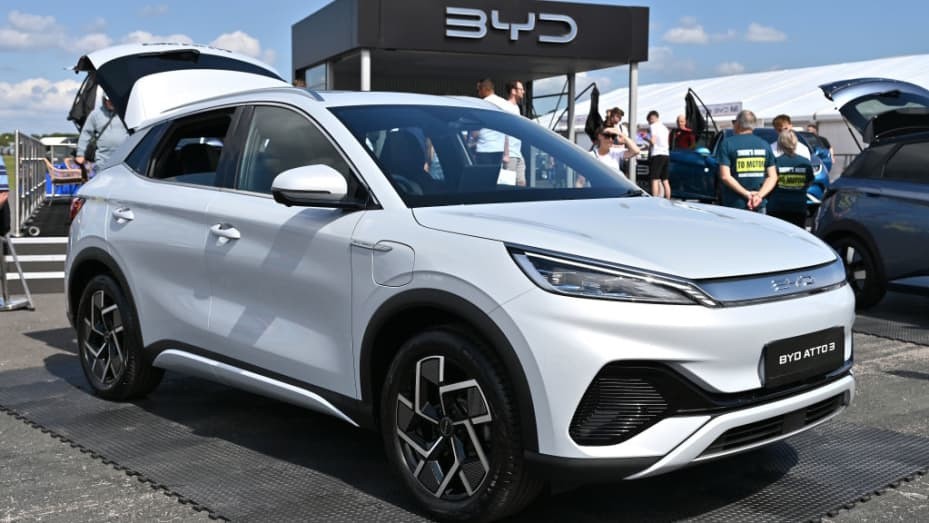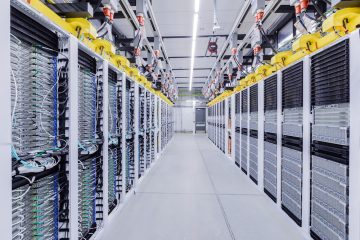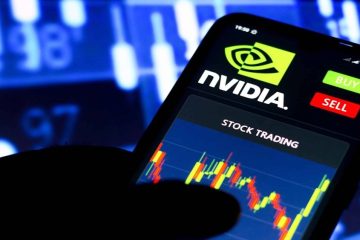BYD’s sudden ascent threatens Tesla’s market value

The two leading electric vehicle manufacturers in the world, BYD and Tesla, are very similar at the moment, with the exception of Tesla’s market valuation, which is around seven times larger than BYD’s. To explain the disparity, one must have a great deal of trust in CEO Elon Musk’s assurance of independence.
After the annual report was released, BYD’s Hong Kong-listed shares dropped 6% on Wednesday. The company is now worth about $86 billion, or 15 times projected earnings per share in the future. Although the final figures were marginally lower than what experts had anticipated, the company had already disclosed preliminary sales and profit projections in January, so there were no major surprises in the headlines. That adds fuel to the fire of concerns that the market leader is seeing its profit growth potential eroded by China’s escalating EV price war, as falling margins counteract the benefits of increased car shipments.
There is still a lot of advertising in China’s car sector. According to a recent blog post by Cui Dongshu, secretary-general of the China Passenger Car Association—”an astonishing level from a historical perspective”—there were price drops on 25 models in February and another 23 in March.
Also at risk is Tesla, whose $566 billion market cap is equivalent to 62 times predicted earnings. Last year, 22% of its revenue came from China. It began slashing costs nationwide in early January and has since added insurance and financing concessions. Still, compared to last year, sales in China are down this year, and inventory is up. Bloomberg reports that earlier this month, the corporation cut production at its Shanghai plant.
After making news for surpassing Tesla in total EV deliveries last quarter, BYD is now financially catching up. Both businesses are anticipated to record $109 billion in sales for the current fiscal year, according to analysts. The Chinese firm stands out because to its lower cost and higher volume of vehicles sold, which includes plug-in hybrids. Even if this means BYD’s profit margins are less, the company’s future growth is likely brighter as the transition to electric vehicles moves beyond the price-insensitive early-adopter phase that was profitable for Tesla.
In order to counteract the negative effect of price reduction on profitability, the Chinese company plans to increase sales of premium vehicles in its domestic market, where it may challenge Tesla and the German internal combustion engine heavyweights, and to grow internationally. In contrast, the more reasonably priced “Model 2” is Tesla’s main growth driver, but it will certainly cut into the company’s profit margins once it launches (which is now projected to be next year).
If BYD and Tesla are both large, similarly sized businesses, and if BYD’s weaker profitability is offset by superior growth prospects, then why is Tesla’s market value so much higher?
The only logical explanation is that people are holding out hope that Tesla will eventually figure out how to make its cars autonomous after all these years of failed deadlines. As the most recent iteration of the company’s guidance puts it, “accompanied by an acceleration of AI, software and fleet-based profits” has long been a part of the announcements. If this kind of capital-light, high-margin business ever materializes and customers are willing to pay for it, it might be worth a lot of money in the tech market.
Tesla’s “full-self-driving” software, which can drive its EVs in most conditions but requires ongoing human supervision, has been gaining increasing attention since the firm started to roll out “version 12″ late last year. Compared to version 11, which relied more on coding, this one uses AI more extensively, which could speed up development. Overnight on Monday, Musk announced on his social media platform X that all U.S. Teslas that can supply FSD will receive a free one-month trial. It appears like he has decided to start drumming up business. You can pay $199 per month or a one-time price of $12,000 to use FSD with Tesla.
Despite a 3% gain on Tuesday, the stock is still down 28% for the year due to stagnant revenues for the company. Much of FSD’s potential lies on its connection to Tesla’s expansion: Its ability to sell FSD subscriptions is directly proportional to the number of automobiles sold.
The future of automated driving is bright, but it’s still far from certain that it will provide the kind of return on investment that Tesla’s backers seem to be anticipating. Considering that industry supplier Mobileye is beginning to incorporate comparable technology into other luxury brands like Polestar and Porsche, the $199 monthly subscription seems steep for a device that still demands drivers to maintain their focus on the road.
Despite its continued success as a carmaker, BYD introduced a new software strategy for vehicles in January. Both Tesla and the investors who believe Musk’s automaker should be considered one of the Magnificent Seven face challenges from its ascent and the relatively low valuation associated with it.










